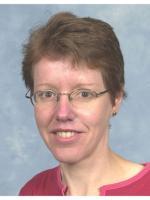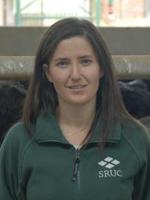Introduction
Agriculture is currently the second largest source of greenhouse gases in the Scottish economy. Greenhouse gas (GHG) mitigation is of significant importance to Scottish Government. Defra and the Devolved Administration funded the Agricultural Greenhouse Gas Research Platform which had the prime objective of improving the national agricultural inventory. Within the Platform project, as part of the analysis process, gaps in current knowledge have been identified on background emissions of nitrous oxide from soils, the linkage between the key drivers and nitrous oxide emissions from soils, and relationship between actual intake of grazing animals and methane emissions. This work is to improve our understanding of these issues. Work carried out in this programme is part of a wider national and international programme of research addressing the climate change challenge, and the need to develop farming systems achieved significant mitigation against current baselines.
Aim of Research
The aim of this work is to develop novel approaches to improve the understating of environmental and management controls of nitrous oxide emissions from the soils, and to improve the estimation of methane emissions from grazing cattle and sheep. The work also aims to provide policy and practical guidelines to greenhouse gas mitigation in Scottish farming, through a wide process of engagement with key stakeholders.
The research builds on previous work within the RESAS Strategic Programme and on collaborations with UK and International partners.
Progress
2022
Background nitrous oxide emissions are emissions from managed, agricultural soils that are not due to recently added nitrogen. However, these emissions substantially contribute to the overall emissions from agricultural soils. As these emissions are indirectly included in the inventory, it is important to understand how they vary with soils and climate. In the UK, the background emissions are typically 2.3 times higher for arable soils than grasslands. These background emissions may be partially accounted for by the emissions associated with residue management. The analysis of nitrous oxide emissions from residues indicates that these emissions are best predicted by the easily degradable fraction of the residue thus immature residues result in higher emissions than mature residues (https://www.sciencedirect.com/science/article/pii/S0048969721076105). Emissions can be reduced by appropriate management, however the mitigation of emissions can result in reduced yield and the storage of soil organic carbon and increased leaching and ammonia volatilisation (https://www.sciencedirect.com/science/article/pii/S0048969722014814). The work on greenhouse gas emissions that will inform the inventory in the 2022-2027 Scottish Government Strategic Research will be funded under C2.
Highlights:
The GHG and Ammonia Mitigation was held in Edinburgh on the 22-24 March highlighted the Scottish government funded work. This conference was organised in conjunction with the AAB and ADAS.
2021
Improving the agricultural inventory is critical to identifying opportunities for agriculture to reduce its emissions and achieve the target of net zero. The analysis of nitrous oxide emissions from organic manures (https://www.frontiersin.org/articles/10.3389/fsufs.2020.00062/full) showed that emission factors were affected by differences in manure composition, application method, incorporation and climatic conditions. This analysis has contributed to the development of robust Tier 2 country specific EFs for inclusion in the UK national agriculture greenhouse gas inventory. Research has highlighted the large uncertainties associated with the accounting for GHG emissions from crop residues. New approaches to this accounting process are being developed and will be published within the next 12 months.
Highlights:
Improving the UK Agricultural Greenhouse Gas Inventory Research Seminar, Dave Chadwick and Bob Rees. Aarhus University, Denmark, February 2021
UK-Argentina Workshop on cooperation in agricultural and climate change research. April 2021
2020
Further work on the emissions that arise naturally (background) indicates that the bulk density of the soil and the annual rainfall may partially explain the variability of these emissions. The work on the risk of high emissions occurring indicates that these peak emissions can be predicted from the water-filled pore space, and the soil mineral N content. An analysis of data from measurements of nitrous oxide associated with the cultivation of oilseed rape crops showed that they can represent a hotspot of emissions as a consequence of the inputs of N fertilisers coupled with return to the soil of N rich crop residues.
Highlights:
The work on boundary lines and research on N2O emissions from Oilseed rape cultivation was presented at the 8th International Symposium on Non-CO2 Greenhouse Gases, June 2019, The Netherlands.
2019
Identifying the contribution of human activity makes to greenhouse gas emissions requires that we separate the emissions that arise naturally (background) from those that are associated with an anthropogenic source. Our analysis of background emissions shows that background emissions are highly variable in the UK and in similar agro-pedoclimatic zones. However, soil type does influence the level of background emissions.
Highlights:
- SEFARI staff were invited to give evidence to the Committee on Climate Change at their meeting in Edinburgh on 13 July, 2018 at which they were considering the Scottish Government’s progress towards meeting their targets on greenhouse gas mitigation in agriculture.
- Roseanna Cunningham the Cabinet Secretary for Climate Change in Land Reform visited one of the SEFARI Institutes in March 2019 to discuss work on greenhouse gas measurement and mitigation with staff involved in the Scottish Governments Strategic Research Programme.
2018
The improvements in the estimation of methane emissions from grazing cattle and sheep provides further information on the differences between genotypes within species, and between pasture type (hill or lowland).
Identifying the conditions under which there is a high risk of nitrous oxide emissions from agriculture will inform the development of tools to assist farmers in reducing. Exploratory work on daily emissions from grasslands sites indicates that the soil water content, air temperature and the soil mineral nitrogen status can be used provided good separation between observed emission and non-emission events.
2017
Improving the estimation of methane emissions from grazing cattle and sheep requires accurate feed intake measurements. This has been achieved from the analysis of herbage and faecal samples that were taken from the same individual animals, during the same time period.
An analyses of the Defra GHG platform data on nitrous oxide emissions has contributed to the development of a decision support framework for grazing systems (van der Weerden et al 2017). This work has been presented at two end user events.
Highlights:
- The SEFARI Institutes have played a leading role in the UK’s Greenhouse gas platform research programme. The programme supported by the Scottish Government and DEFRA sought to improve the accuracy and resolution of our reporting system by providing new experimental evidence on the factors affecting emissions and statistics relevant to changing farming practices in the UK. It has provided evidence for a UK specific method of calculating methane and nitrous oxide emissions that will reflect the adoption of mitigation practices by the industry, enabling the forecasting and monitoring of performance against target emissions reductions set by the UK and Scottish Governments’ Climate Change Acts. The new reporting approach is reflected in the current Government reporting of national GHG emissions in 2016, which the UK is legally required to submit to the United Nations Framework convention on Climate Change. Research in this area is increasing the value of the data collected from the DEFRA GHG platform.
Future Activities
The research team will continue to explore the vast resource of the data that has been collected from the Defra GHG platform. The work will focus on nitrous oxide emissions from crops and soil, particularly crop residues, oil seed rape, and cereals.
Selected Outputs
- Bell, M.J., Hinton, N.J., Cloy, J.M., Topp, C.F.E., Rees, R.M., Williams, J.R., Misselbrook, T.H. & Chadwick, D.R. 2016. How do emission rates and emission factors for nitrous oxide and ammonia vary with manure type and time of application in a Scottish farmland? Geoderma, 264, 81-93. https://doi.org/10.1016/j.geoderma.2015.10.007
- van der Weerden, T. J., Laurenson, S., Vogeler, I., Beukes, P. C., Thomas, S. M., Rees, R. M., … de Klein, C. A. M. (2017). Mitigating nitrous oxide and manure-derived methane emissions by removing cows in response to wet soil conditions. Agricultural Systems, 156(September 2016), 126–138. https://doi.org/10.1016/j.agsy.2017.06.010
- Chadwick,D.R., Cardenas,L.M., Dhanoa,M.S., Donovan,N., Misselbrook,T., Williams,J.R., Thorman,R.E., McGeough,K.L., Watson,C.J., Bell,M., Anthony,S.G. & Rees,R.M. 2018. The contribution of cattle urine and dung to nitrous oxide emissions: Quantification of country specific emission factors and implications for national inventories. Science of the Total Environment, 635, 607-617. https://doi.org/10.1016/j.scitotenv.2018.04.152
- Cardenas,L.M., Bhogal,A., Chadwick,D.R., McGeough,K., Misselbrook,T., Rees,R.M., THORMAN,R.E., Watson,C.J., Williams,J.R., Smith,K.A. & Calvet,S. 2019. Nitrogen use efficiency and nitrous oxide emissions from five UK fertilised grasslands. Science of the Total Environment. https://doi.org/10.1016/j.scitotenv.2019.01.082
Thorman, R. E., Nicholson, F. A., Topp, C. F. E., Bell, M. J., Cardenas, L. M., Chadwick, D. R., Cloy, J. M., & Misselbrook, T. H. (2020). Towards Country-Specific Nitrous Oxide Emission Factors for Manures Applied to Arable and Grassland Soils in the UK. Frontiers in Sustainable Food Systems, 4(May), 1–19. https://doi.org/10.3389/fsufs.2020.00062
Badagliacca, Giuseppe, Rees, Robert M., Giambalvo, Dari, and Saia, Sergio. Vertisols and Cambisols had contrasting short term greenhouse gas responses to crop residue management. Plans, Soil and Environment 66, 222-233. 2020.
Budiman, Steiner, C., Topp, C.F.E., Buerkert, A., 2020. Soil–climate contribution to DNDC model uncertainty in simulating biomass accumulation under urban vegetable production on a Petroplinthic Cambisol in Tamale, Ghana. J. Plant Nutr. Soil Sci. 183, 306–315. https://doi.org/10.1002/jpln.201900514
Fitton, N., Bindi, M., Brilli, L., Cichota, R., Dibari, C., Fuchs, K., Huguenin-elie, O., Klumpp, K., Lie, M., Lüscher, A., Martin, R., Mcauli, R., Merbold, L., Newton, P., Rees, R.M., Smith, P., Topp, C.F.E., Snow, V., 2019. Modelling biological N fi xation and grass-legume dynamics with process- based biogeochemical models of varying complexity 106, 58–66. https://doi.org/10.1016/j.eja.2019.03.008
Fuchs, K., Merbold, L., Buchmann, N., Bretscher, D., Brilli, L., Topp, C.F.E., Klumpp, K., Lieffering, M., Martin, R., Paul, C.D., Rees, R.M., Rolinski, S., Smith, P., Snow, V., 2019. Multi – model evaluation of nitrous oxide emissions from an intensively managed grassland. https://doi.org/10.1029/2019JG005261
Myrgiotis, V., Williams, M., Rees, R.M., Topp, C.F.E., 2019. Estimating the soil N2O emission intensity of croplands in northwest Europe. Biogeosciences Discuss. 1–24. https://doi.org/10.5194/bg-2018-490
Xu,C., Han,X., Ru,S., Cardenas,L., Rees,R.M., Wu,D., Wu,W. & Meng,F. 2019. Crop straw incorporation interacts with N fertilizer on N2O emissions in an intensively cropped farmland. Geoderma, 341, 129-137.



